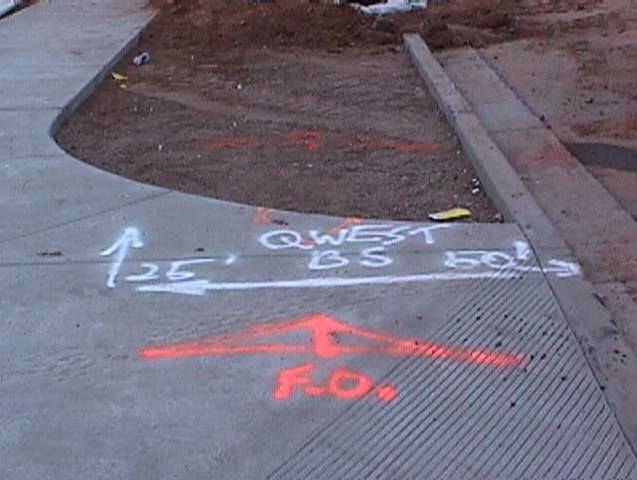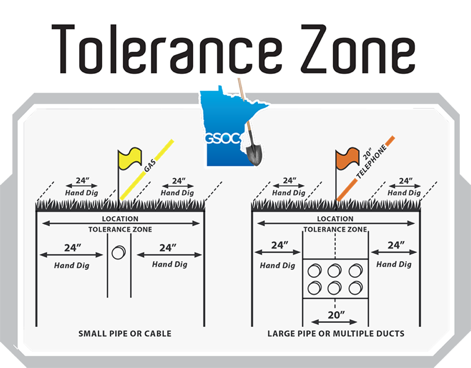According to MN State Statute 216D, excavators are required to use white markings (paint, flags, whiskers, stakes, etc.) to define the entire proposed excavation area before filing a locate request, except where it can be shown it’s not practical. Once the excavation area is white-lined, contact Gopher State One Call (GSOC) 48 hours in advance, excluding weekends and holidays, before breaking ground. GSOC will then notify the affected facility operators who dispatch locators to mark their facility lines in the excavation area.
The excavator is also responsible for reasonably protecting and preserving locate markings until doing so is no longer required for proper and safe excavation near the underground facilities. If the excavator has reason to believe locate markings are obliterated, obscured, missing, or incorrect, he/she must notify the facility operator to refresh or remark the locate area. The excavator can also contact GSOC to update a currently effective ticket at least 48 hours, excluding weekends and holidays, prior to the expiration of the ticket. It is important that all facilities are marked or cleared prior to excavating. If the excavator does not see markings or a positive response through the Search and Status feature on GSOC’s website by the excavation start time, he/she should contact the facility operator.
When there is a strong likelihood that the marks may be destroyed (high-traffic, gravel, or dirt areas, etc.), the excavator may want to request offset or whisker markings when filing the locate ticket. Offsets are indicated on a permanent surface or stakes and are placed parallel to the facility. These markings should indicate the distance from the offset to the facility and should identify the facility owner and if necessary, the size of the facility. The width of the facility must be indicated if it is greater than eight inches wide. Marking whiskers are very resilient and spring back when run over by lawn mowers, graders, and heavy equipment. Whiskers are typically attached to wood stakes or nails before they are placed in the ground.

Offset Marking
Photo Credit: Arizona 811

Marking Whiskers
Photo Credit: Fold A-Goal
Once all affected facility operators have responded and the underground utilities are located, excavators are required to maintain a minimum horizontal (side to side) clearance of two feet (24”) between an unexposed facility and the cutting edge or point of any power-operated excavating or earthmoving equipment. For example: if the markings indicate a 20” pipe is buried, the tolerance zone is 68” wide (24” + 20” + 24”). If excavation is required within the tolerance zone, it must be performed very carefully. Consider the use of vacuum excavation or hand tools. The excavator is responsible to excavate without causing damage to the facility or undermining the lateral support. See below for a visual example.

While excavating, it is the excavator’s responsibility to inspect all facilities that have been exposed. If equipment comes in physical contact with an underground facility during your excavation, you must stop the excavation and contact the facility owner, even if there is no noticeable damage. This damage could include the pulling or kinking of the facility or damage to the protective coating, covering, or tracer wire.
Remember that the depth of an underground facility may vary due to installation practices, changes in grade, frost, erosion, and other variables. Any depth readings given by a locator, if given at all, are only an estimation of the depth of the facility and the excavator is still responsible to safely expose the facility without damage.
Do your part to protect our state’s underground infrastructure by following these guidelines during the course of your excavation. GSOC is available to assist with any questions or concerns you may have about the safe excavating process. Feel free to contact GSOC Customer Support at 651-681-7326 or customersupport@gopherstateonecall.org
